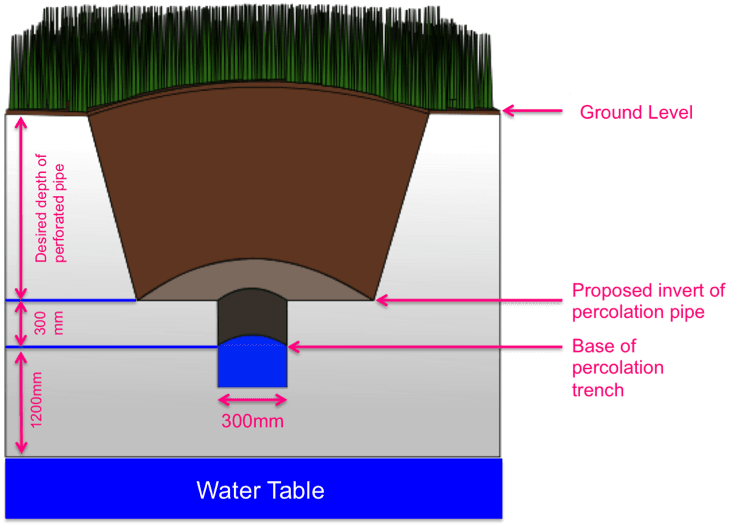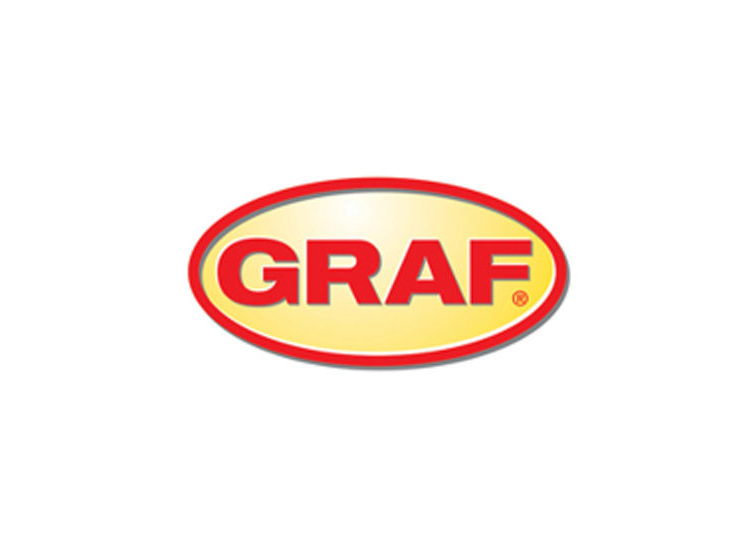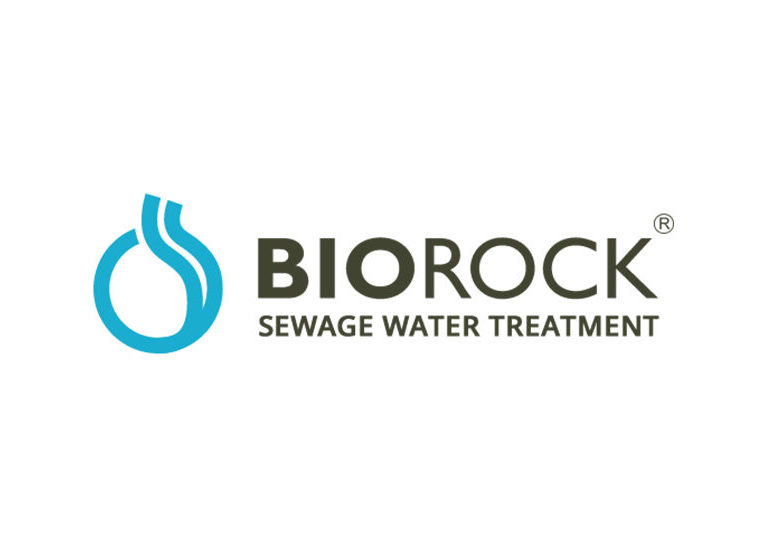Drainage Fields and Soil Percolation

We are often asked ‘how big should my drainage field be?’ – in order to work that out you need to complete a porosity, sometimes known as a soil percolation test. It is important to note that drainage fields are not the same as soakaways which are used for surface water (rainwater drainage).
The Percolation Test
POROSITY is the measure of how much groundwater a soil can hold, PERMIABILITY is the measure of how quickly water passes through a soil, while RETENTION is the measure of how much water stays behind.
Before you can dispose of effluent via a drainage field you first need to assess whether such a route is appropriate ie: you have a good depth of well-drained, well-aerated sole away from watercourses, well/boreholes, dwellings and avoiding sloping sites and areas prone to waterlogging.
Trial hole and percolation test method

To calculate the exact area of land required for effective disposal an ‘assessment’ is required, usually by performing a percolation/water table test as described in the latest version of Building Regulations: H2
Stage 1 – work out the groundwater level
A trial hole should be dug to determine the position of the standing groundwater table a minimum of 1m2 in area and 2m deep, or a minimum of 1.65m below the invert of the proposed drainage field pipework. The groundwater table should not rise to within 1m of the invert level of the proposed effluent distribution pipes. If the test is carried out in summer, the likely winter groundwater levels should be considered.
Stage 2 – the percolation test
A percolation test should then be carried out to assess the further suitability of the proposed area. A hole 300mm square should be excavated to a depth 300mm below the proposed invert level of the effluent distribution pipe. Where deep drains are necessary the hole should conform to this shape at the bottom, but may be enlarged above the 300mm level to enable safe excavation to be carried out.
Fill the 300mm square section of the hole to a depth of at least 300mm with water and allow it to seep away overnight.
Next day, refill the test section with water to a depth of at least 300mm and observe the time, in seconds, for the water to seep away from 75% full to 25% full level (ie: a depth of 150mm). Divide this time by 150. The answer gives the average time in seconds (Vp) required for the water to drop 1mm.
The test should be carried out at least three times with at least two trial holes and the average figure from the tests should be taken. The test should not be carried out during abnormal weather conditions such as heavy rain, severe frost or drought.
Drainage field disposal should only be used when percolation tests indicate average values of Vp of between 12 and 100. This minimum value ensures that untreated effluent cannot percolate too rapidly into groundwater. Where Vp is outside these limits effective treatment is unlikely to take place in a drainage field.
Stage 3 – the drainage field calculation
To calculate the floor area of the drainage field (A in m²), use the following formulas:
For Septic tanks: Area (A) = p x Vp x 0.25
Sewage treatment plants: Area (A) = p x Vp x 0.20
p = the number of people served by the tank
Vp = is the percolation value from the test in stage 2
As a reminder, the Drainage field disposal should only be used when percolation tests indicate average values of Vp of between 12 and 100.
Key Information for Drainage Fields
It is always a good idea to discuss your project with your local Building Control and check with the Environment Agency.
If you are installing a septic tank it can only discharge to the ground via a drainage field. Discharge to a watercourse is not permitted.
Drainage fields must at least be
- 10m from a watercourse or permeable drain
- 50m from a water abstraction point and not in any Zone 1 groundwater protection zone
- 15m from any building
- sufficiently far away enough from any other drainage fields, mounds or soakaways so that the overall soakage capacity of the ground is not exceeded
Take a look at the Building Regulations for all requirements. British Water also has a code of practice for drainage fields.






